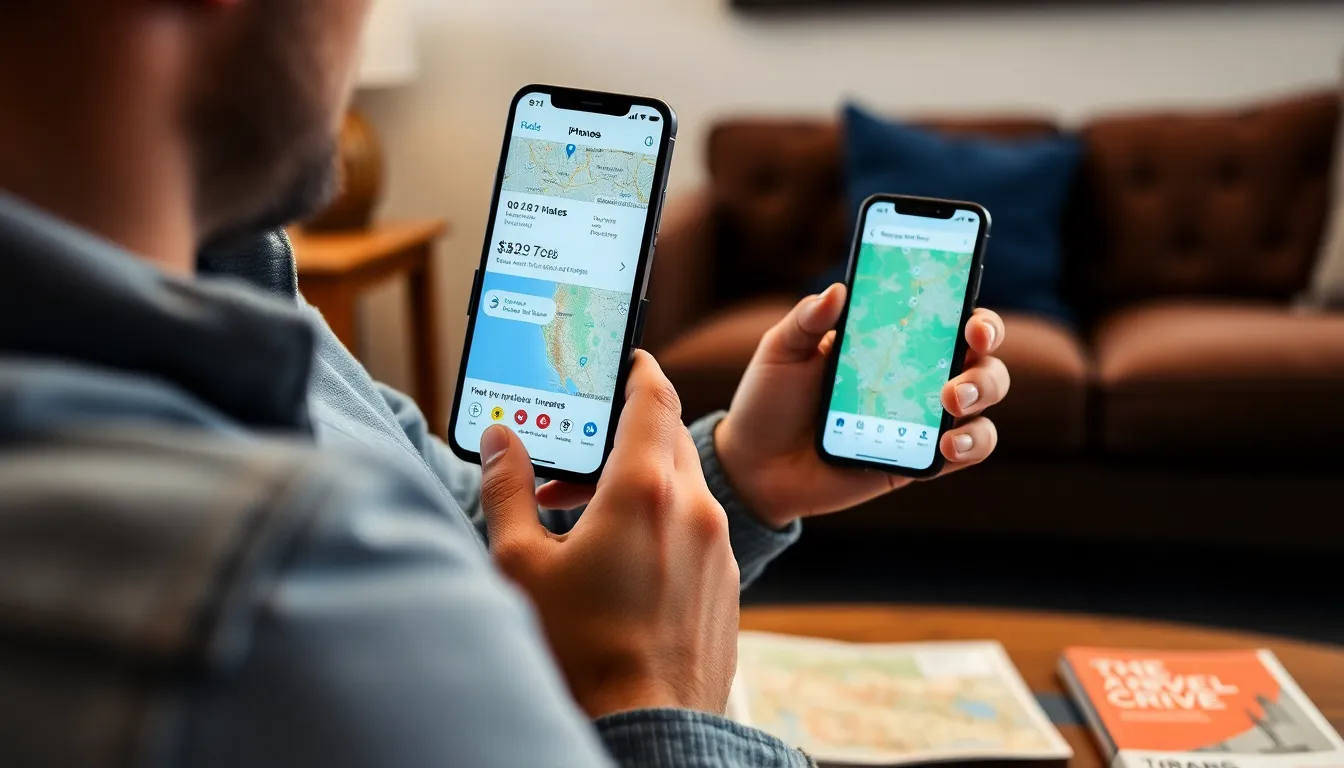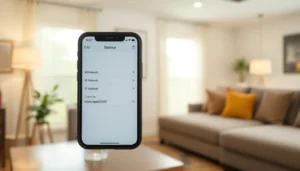Table of Contents
ToggleEver wondered where your iPhone’s been taking you? It’s like having a personal travel diary that tracks your every move. Whether you’re trying to remember that amazing taco truck you stumbled upon or just curious about your daily adventures, checking your location history can be a game changer.
In a world where GPS is basically a modern-day magic wand, knowing how to access that treasure trove of location data can save you from the dreaded “Where did I park?” moment. Plus, it’s a great way to impress your friends with your impeccable sense of direction—or lack thereof! Get ready to unlock the secrets of your iPhone’s location history and discover just how much fun your phone can have without you.
Understanding Location History on iPhone
Location history on iPhone tracks where a user has been over time. This feature serves as a digital log, allowing users to revisit past locations easily.
What Is Location History?
Location history refers to a record stored on an iPhone of places visited by the user. The iPhone collects this information whenever location services are enabled. Users can view this data through significant locations in settings. This feature helps recall visits to specific spots like favorite restaurants or notable landmarks. Each location in this history includes timestamps, which make it easier to remember exact dates.
Why Location History Matters
Location history offers practical benefits for users. It aids in planning future trips by providing insight into previously enjoyed destinations. Friends can share fun experiences by reminiscing about trips or outings. This data can enhance navigation, helping users find previously visited places faster. Additionally, location history enables better memory recall for special events or gatherings. Enhanced security can also be obtained, as it aids in tracking devices if lost or misplaced.
Accessing Location History on iPhone

Accessing location history on an iPhone is straightforward and provides valuable insights into past movements. Users can explore this feature through the settings app or the Maps application.
Using Settings to View Location History
To view location history, open the Settings app. Scroll down and select Privacy, then tap Location Services. From here, select System Services and then Significant Locations. This section reveals a list of places visited along with corresponding timestamps. Users can tap on any location to see details, including the last visit date.
Adjust this feature by turning it on or off based on preferences for privacy or convenience. Accessing this information allows for easy recall of favorite spots and helps users make informed travel decisions.
Checking Location History via Maps
Maps also displays location history. Launch the Maps app, then tap on the user profile icon in the upper-right corner. Select Maps History to review recent locations. Here, users can see visited places and routes taken over time. Each entry lists the date of the visit, offering context for memory recall. Users can utilize this feature to retrace steps or find previously visited locations, enhancing navigation and planning for future outings.
Managing Your Location History
Managing location history on an iPhone involves both clearing data and adjusting settings. Users can maintain privacy while taking advantage of the insights location history provides.
Clearing Location History
Clearing location history helps ensure privacy and declutter data on the device. To clear this information, navigate to Settings, select Privacy, then tap on Location Services, and finally choose Significant Locations. Inside this section, users can view individual entries, and an option appears to clear all history. This action removes all stored locations, freeing up space and enhancing privacy. Regularly clearing location history can help users maintain control over personal data.
Adjusting Location Settings
Adjusting location settings allows users to manage how their device records movement. Begin by going to Settings and selecting Privacy, followed by Location Services. Users can toggle Location Services on or off for specific apps. They can also adjust the Significant Locations feature, choosing to turn it on or off. Customizing these settings enables individuals to balance convenience with privacy. By selectively enabling location features, users can tailor their experience to align with personal preferences and needs.
Troubleshooting Common Issues
Common issues may arise when accessing location history on an iPhone. Users can encounter difficulties with Location Services or notice that their location history fails to update.
Problems with Location Services
Location Services may not work correctly due to various factors. First, users must check if the feature is enabled in Settings. Navigating to Privacy and selecting Location Services ensures it is turned on. Additionally, insufficient battery life might hinder the device’s ability to track locations accurately. App-specific permissions may also contribute to problems; confirming that each relevant app has the necessary access can resolve these issues. Lastly, software updates may contain necessary bug fixes, so keeping iOS current plays a vital role in maintaining functionality.
Solutions for Location History Not Updating
Several solutions exist for when location history doesn’t update on an iPhone. First, restarting the device often resolves temporary glitches. If issues persist, users should toggle Location Services off, wait for a few moments, then toggle it back on. Additionally, checking for iOS updates can introduce improvements that enhance tracking accuracy. Clearing the location history might help refresh data as well; users can access this feature in Settings under Privacy. Finally, resetting location and privacy settings may serve as a last resort, ensuring apps can track locations properly after losing previous configurations.
Exploring location history on an iPhone opens up a world of memories and practical benefits. Users can easily revisit favorite spots and enhance their navigation experience. This feature not only serves as a digital diary but also aids in planning future adventures.
By managing location settings and clearing data when necessary, individuals can maintain their privacy while enjoying the convenience of this powerful tool. Troubleshooting tips ensure a seamless experience, allowing users to access their location history without hassle. Overall, understanding and utilizing this feature can enrich everyday life and spark engaging conversations.







